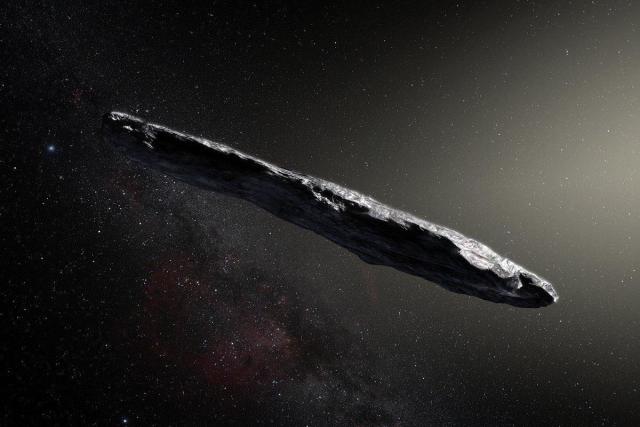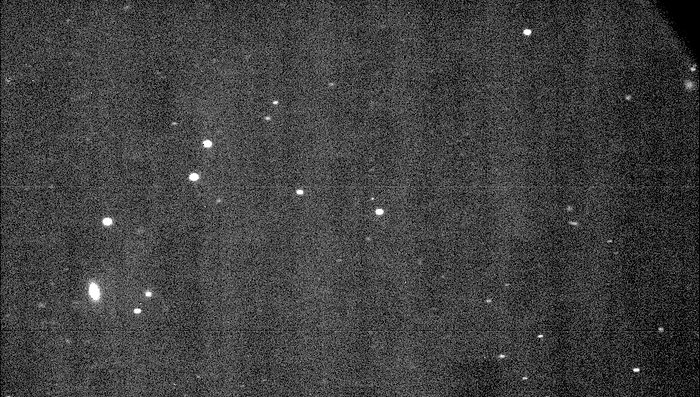
Last month, for the first time ever, astronomers spotted an object which had entered our Solar System from interstellar space – a strange ‘cigar’ up to 1,200ft long.
Now researchers from the Seti – Search for Extra-Terrestrial Intelligence – project are to scan the object, to see if it’s actually an alien probe.
It’s certainly a mysterious asteroid – scientists initially thought it was a comet, but reclassified it.
Researchers from the Seti project Breakthrough Listen are to ‘listen’ to the asteroid using the Green Bank radio telescope in West Virginia.

A statement said, ‘Researchers working on long-distance space transportation have previously suggested that a cigar or needle shape is the most likely architecture for an interstellar spacecraft, since this would minimise friction and damage from interstellar gas and dust.
‘While a natural origin is more likely, there is currently no consensus on what that origin might have been, and Breakthrough Listen is well positioned to explore the possibility that Oumuamua could be an artifact.’
Scientists believe that it was travelling through space for millions of years before arriving near our Sun, according to results published in Nature.
On 19 October 2017, the Pan-STARRS 1 telescope in Hawai`i picked up a faint point of light – and scientists realised that its orbit showed that it came from the space between the stars.
At first scientists thought it was a comet, but it was reclassified as an asteroid and named 1I/2017 U1 (`Oumuamua).
Scientists suggest that Oumuamua is dense, possibly rocky or with high metal content, lacks significant amounts of water or ice, and that its surface is now dark and reddened due to the effects of irradiation from cosmic rays over millions of years.
It is estimated to be at least 400 metres long.
_________________________________________________
To avoid confusion because the image above IS NOT a photograph, here is the actual photo
Crédit:
To avoid confusion because the image above IS NOT a photograph, here is the actual photo
Raw image straight from ESO's Very Large Telescope. 1I/2017 U1 (‘Oumuamua), the interstellar asteroid, is the tiny dot at the centre, above the brighter star. Though actually faint, in this image the asteroid appears bright.
ESO/O.Hainaut


